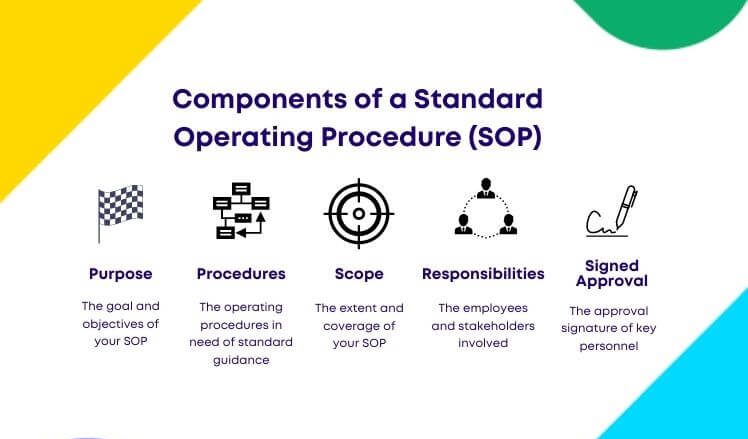A Standard Operating Procedure (SOP) is a document that outlines step-by-step procedures or guidelines for performing a specific task or activity in a consistent and standardized manner. SOPs are used in a variety of industries and businesses to ensure that tasks are performed efficiently, safely, and with a high degree of quality.

An SOP typically includes the following elements:
Objective: The objective of the SOP describes the purpose of the procedure, what task it is meant to accomplish, and what outcome is expected.
Scope: The scope of the SOP specifies the intended audience, equipment, and materials required, and the physical or environmental conditions required to carry out the task.
Procedure: The procedure provides step-by-step instructions for completing the task. It includes the specific steps required to perform the task, the order in which they should be completed, and any important notes or warnings.
Responsibility: The responsibility section assigns specific roles and responsibilities to individuals involved in the task. This ensures that everyone knows who is responsible for what and who to turn to if there are issues or questions.
Documentation: The documentation section outlines the records, forms, or other documentation required to complete the task. This may include checklists, logs, or other forms of documentation that need to be completed as part of the process.
Quality control: The quality control section describes the process for ensuring that the task is performed correctly and meets the required standards of quality. This may include checks and balances, quality checks, or other forms of verification.
The purpose of an SOP is to provide clear and concise instructions for performing a task or activity in a consistent and standardized manner. This helps to ensure that the task is performed efficiently, safely, and with a high degree of quality. SOPs are often used to train new employees or to provide a reference for existing employees who need a reminder of how to complete a task correctly. By following SOPs, organizations can improve their efficiency, reduce errors, and maintain a high level of quality in their operations.
